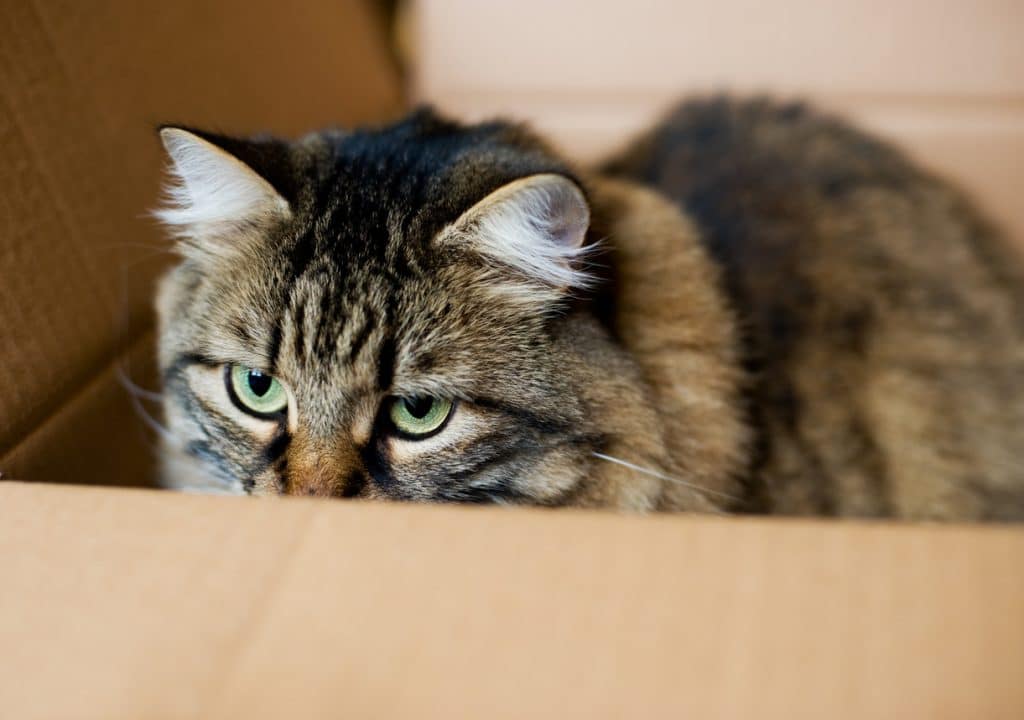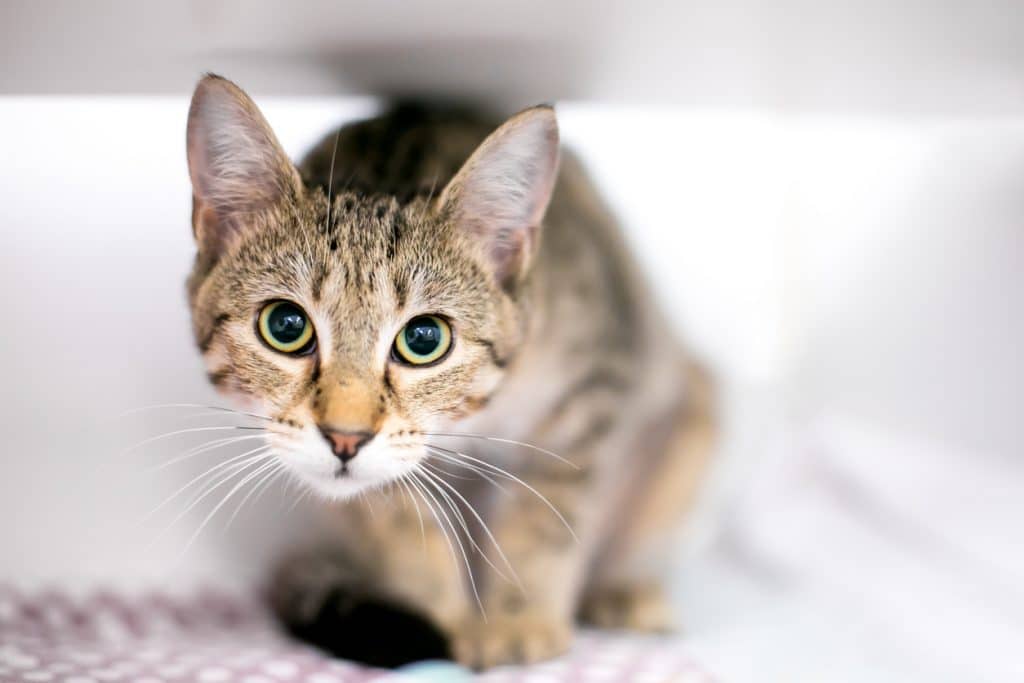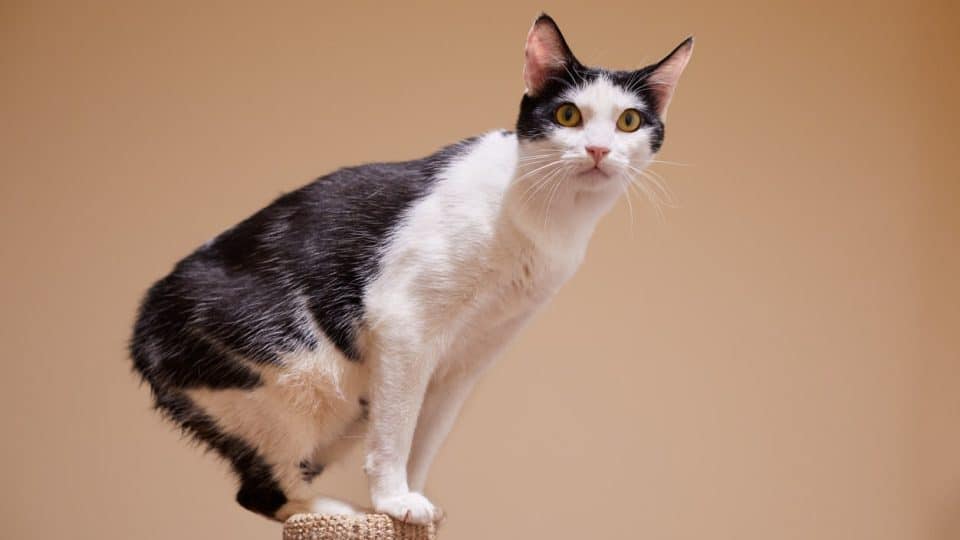Anyone with anxiety is all too familiar with the icy grip of fear and constant stress, but humans aren’t the only animal this condition affects: cats can also suffer from anxiety.
Because cats aren’t able to tell us what they’re experiencing, it can be challenging to recognise the signs of anxiety and take steps to help them.
At Rover, we’re here to help. We’ve done the research for you and will walk you through how to recognise cat anxiety and how to help your feline friend.
What Anxiety Looks Like in Cats
Fear is something that every person and every animal experiences at some point in their life—but how do you tell the difference between healthy fear and cat anxiety?
Fear is usually a healthy survival skill, but constant fear of potential danger from unknown or imagined sources (anxiety) is abnormal.
Humans with anxiety can often communicate what they are experiencing, but recognising fear-based behaviours is key to identifying this condition in cats.
Here are the symptoms possible with cat anxiety:
- aggression
- crying
- following owner
- hiding
- trembling
- withdrawing
- lethargy
- overgrooming
- vomiting
- sudden toileting or toileting outside of the litter box
- diarrhoea
- appetite loss
- destructive behaviour
What causes anxiety in cats?
Cats can develop anxiety for a variety of reasons. According to PetMD, it can be caused by a traumatic experience, social deprivation, illness or painful physical conditions, ageing changes, viral infections, toxic conditions, a history of confinement or abuse, abandonment, neglect, an unfamiliar environment, or change in ownership.
If your cat starts to show signs of distress when you leave—or shows signs of distress while you are away—your cat might have separation anxiety. Your cat may show no signs of anxiety while you are home if this is the case.
A major cause of anxiety relating to environment in cats is when there are too many felines in one household, or where there aren’t adequate resources—such as litter trays and water bowls—to meet all of their needs. Cats stressed in multi-cat households will often develop urinary tract infections.

iStock/CARAAZUL
Treats and Products to Help with Cat Anxiety
If you suspect that your cat may have anxiety, the first step is to consult your veterinarian. This also helps to rule out other possible health conditions causing the symptoms.
Your veterinarian will help with identifying fear triggers, prescribe medication if it is needed, and will be able to make recommendations based on your cat’s specific case.
There are many ways that you can help ease your cat’s anxiety, but because anxiety is individual to each cat, it may take trial and error to find what works best for your cat. These are a few products that may help with cat anxiety.
Thundershirts for Cats
Thundershirts are compression vests that give cats a gentle hug of pressure. This is intended to calm stressed animals. While Thundershirts have proven effectiveness with dogs, most of the support for using them with cats is anecdotal. Thundershirts have a notable following, though, and—if your cat is willing to try one on—it might be worth giving a shot.
Cat-Calming Collars
Cat-calming collars are infused with a pheromone that mimics those that a mother cat radiates to soothe her kittens. Kittens aren’t the only ones that benefit from this, though. Supposedly, they are just as effective on adult cats.
Putting an unfamiliar accessory on without introduction can add to a cat’s stress, though. Let them sniff it and get used to it before putting it on. You can encourage your cat by giving them treats while they smell or study it, too.
Cat-Calming Pheromone Diffusers
Collars aren’t the only product that uses pheromones to calm cats down. Feliway diffuser plug-ins use a synthetic version of the same feline facial pheromones that a mother cat gives off while nursing her kittens.
Diffusers are an excellent option for cats who don’t like to wear clothes or collars, too. It’s also less likely to add to your cat’s stress by wearing a strange, new accessory.
Calming Treats and Cat Food
Your cat’s diet may also affect their stress levels. According to PetMD, anti-anxiety cat food containing tryptophan or anti-anxiety cat treats with alpha-casozepine may help manage stress.
Tryptophan is the same compound that is found in turkey and associated with sleepiness, and alpha-casozepine has been tested in vet visits for cats, which showed that it had at least a mild calming effect.

Mary Swift/ iStock
Behavioural and Lifestyle Changes to Help with Cat Anxiety
Managing anxiety goes beyond medication and helpful products. Your cat’s environment and your behaviour can also make a significant impact in helping them.
Keep your cat mentally stimulated
The New York Times suggests that you first make sure that your home offers plenty of mental stimulation to satisfy your cat’s natural instincts. Your cat is a predator at heart, and they crave a challenge. Hanging a bird feeder outside of the window, offering your cat a high perch, and introducing new, exciting things such as empty paper bags and boxes, new toys, or kibble-dispensing puzzles will help meet your cat’s natural needs.
Give your cat space
Giving your cat enough space is essential if they suffer from anxiety. Over-petting, or petting when cats aren’t looking for fuss, sometimes pushes cats towards aggressive behaviour. Let your cat come to you on their terms, and don’t push affection onto them.
Play!
Positive interaction boosts your cat’s confidence, helps them to feel secure in your home and increases your bond with them. To keep things interesting, try keeping a stash of cat toys stored in a closet and rotate toys out to keep them fresh and exciting for your cat.
Manage separation anxiety
If your cat has separation anxiety and shows distress when you leave or while you’re away, there are steps that you can take to reduce stress and manage symptoms.Lauren Parsch, cat behaviour consultant, suggests making departures more low-key and desensitising your cat to signs you’re about to leave. “For example, put your keys in your pocket right after you get dressed,” she says.
Doing these things regularly without leaving your house will help decrease the power they hold over your cat’s stress.
Taking short trips—such as trips to the postbox, quick trips to the store, walking out to your car, or even walking out the front door and then walking back in—will help your cat adjust to being alone. It helps them build confidence that you will return and desensitises them to your absence. Giving your cat a treat when you return can help turn this stressful experience into a more positive one, as well.
For severe cases of separation anxiety, calming medication may be recommended by your vet.
Try New Ideas
As you work to ease your cat’s anxiety, remember that every cat is unique, and what may work for one cat may not work for another. You may need to try different steps, changes to the environment, and add in calming products before you find what works best for your cat.
Throughout this process, it is crucial to be in contact with your veterinarian. They can make recommendations based on your specific case and will advise you on whether medication is a good fit for your cat.
Best of luck in your journey, and stay strong. Positive changes take time to happen, but with a bit of knowledge and a lot of love, you can help your cat live their best life.



